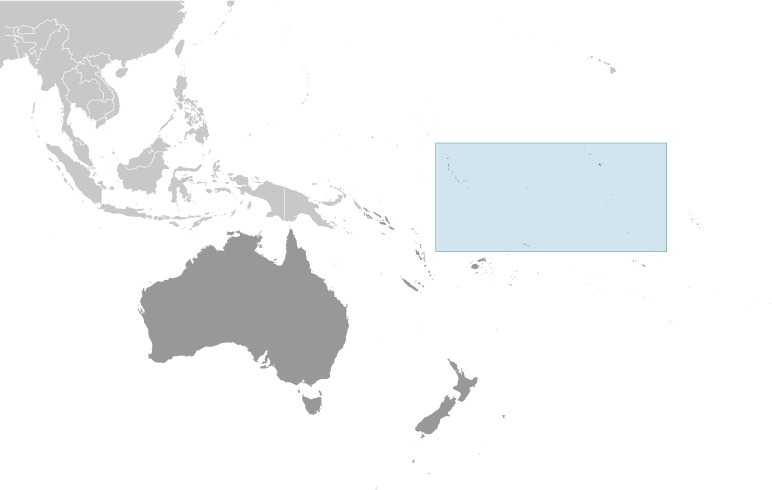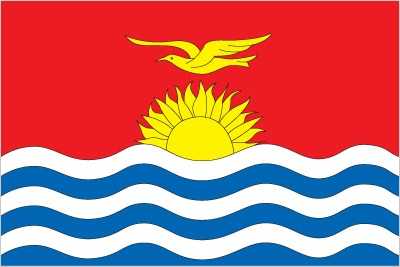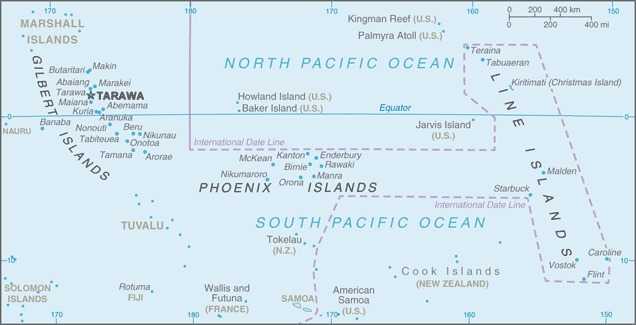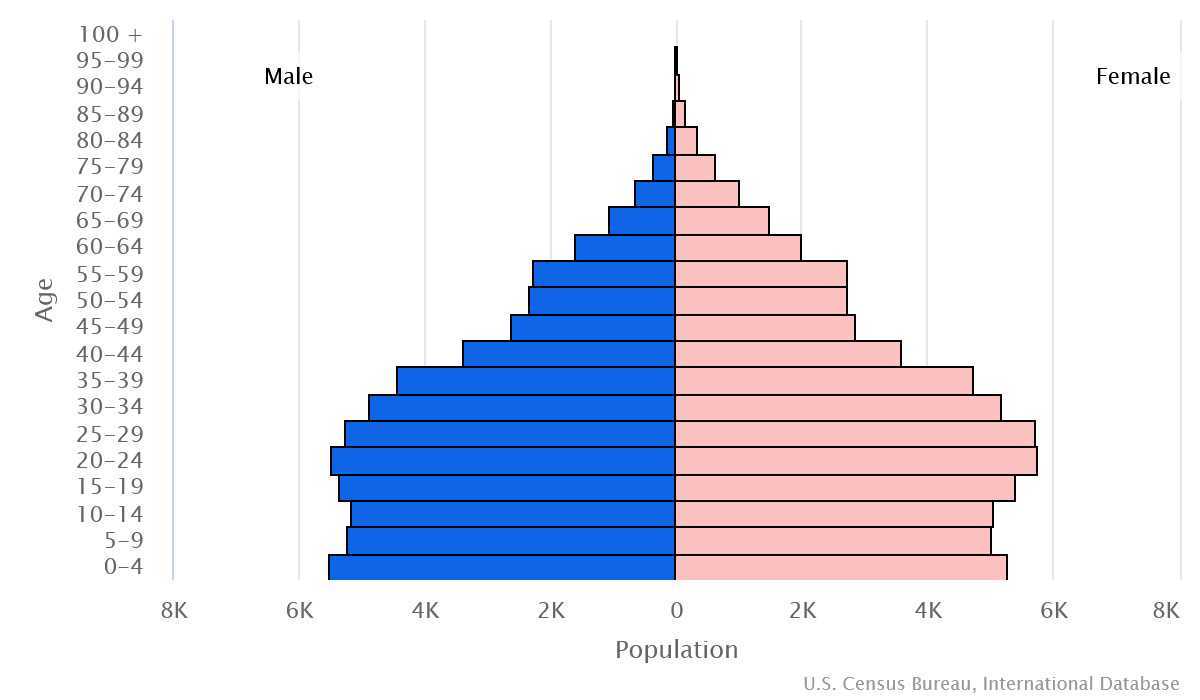Introduction
Background
The Gilbert Islands became a British protectorate in 1892 and a colony in 1915. The Japanese captured them in 1941, and the US retook them in 1943. The UK granted the Gilbert Islands self-rule in 1971 and complete independence in 1979 under the new name of Kiribati. Kiribati joined the UN in 1999 and has been an active participant in international efforts to combat climate change.
Geography
Area
total: 811 sq km
land: 811 sq km
water: 0 sq km
Climate
tropical; marine, hot and humid, moderated by trade winds
Natural resources
phosphate (production discontinued in 1979), coconuts (copra), fish
People and Society
Population
total: 116,545
male: 56,364
female: 60,181 (2024 est.)
Ethnic groups
I-Kiribati 95.78%, I-Kiribati/mixed 3.8%, Tuvaluan 0.2%, other 1.7% (2020 est.)
Languages
Gilbertese, English (official)
Religions
Roman Catholic 58.9%, Kiribati Uniting Church 21.2%, Kiribati Protestant Church 8.4%, Church of Jesus Christ 5.6%, Seventh Day Adventist 2.1%, Baha'i 2.1%, other 1.7% (2020 est.)
Population growth rate
1% (2024 est.)
Government
Government type
presidential republic
Capital
name: Tarawa
Executive branch
chief of state: President Taneti MAAMAU (since 11 March 2016); Vice President Teuea TOATU (since 19 June 2019); note - the president is both chief of state and head of government
head of government: President Taneti MAAMAU (since 11 March 2016); Vice President Teuea TOATU (since 19 June 2019)
Legislative branch
description: unicameral House of Assembly or Maneaba Ni Maungatabu (46 seats; 44 members directly elected in single- and multi-seat constituencies by absolute majority vote in two rounds if needed; 1 member appointed by the Rabi Council of Leaders - representing Banaba Island, and 1 ex officio member - the attorney general; members serve 4-year terms)
Economy
Economic overview
lower-middle income, Pacific island economy; environmentally fragile; sizable remittances; key phosphate mining fund; tourism and fishing industries; public sector-dominated economy; recent withdrawal from Pacific Islands Forum; ongoing constitutional crisis
Real GDP (purchasing power parity)
$262.821 million (2022 est.)
$258.777 million (2021 est.)
$239.908 million (2020 est.)
Real GDP per capita
$2,000 (2022 est.)
$2,000 (2021 est.)
$1,900 (2020 est.)
Agricultural products
coconuts, bananas, vegetables, taro, tropical fruits, pork, chicken, nuts, eggs, pork offal (2022)
Industries
fishing, handicrafts
Exports
$19.677 million (2022 est.)
$10.754 million (2021 est.)
$21.228 million (2020 est.)
Exports - partners
Thailand 55%, Philippines 15%, Japan 10%, Indonesia 8%, South Korea 4% (2022)
Exports - commodities
fish, ships, coconut oil, copra, raw sugar (2022)
Imports
$254.438 million (2022 est.)
$201.984 million (2021 est.)
$148.77 million (2020 est.)
Imports - partners
Taiwan 25%, China 22%, Fiji 13%, Australia 9%, South Korea 7% (2022)
Imports - commodities
ships, refined petroleum, rice, twine and rope, prepared meat (2022)
Exchange rates
Australian dollars (AUD) per US dollar -
Exchange rates:
1.442 (2022 est.)
1.331 (2021 est.)
1.453 (2020 est.)
1.439 (2019 est.)
1.338 (2018 est.)
Page last updated: Wednesday, May 15, 2024




